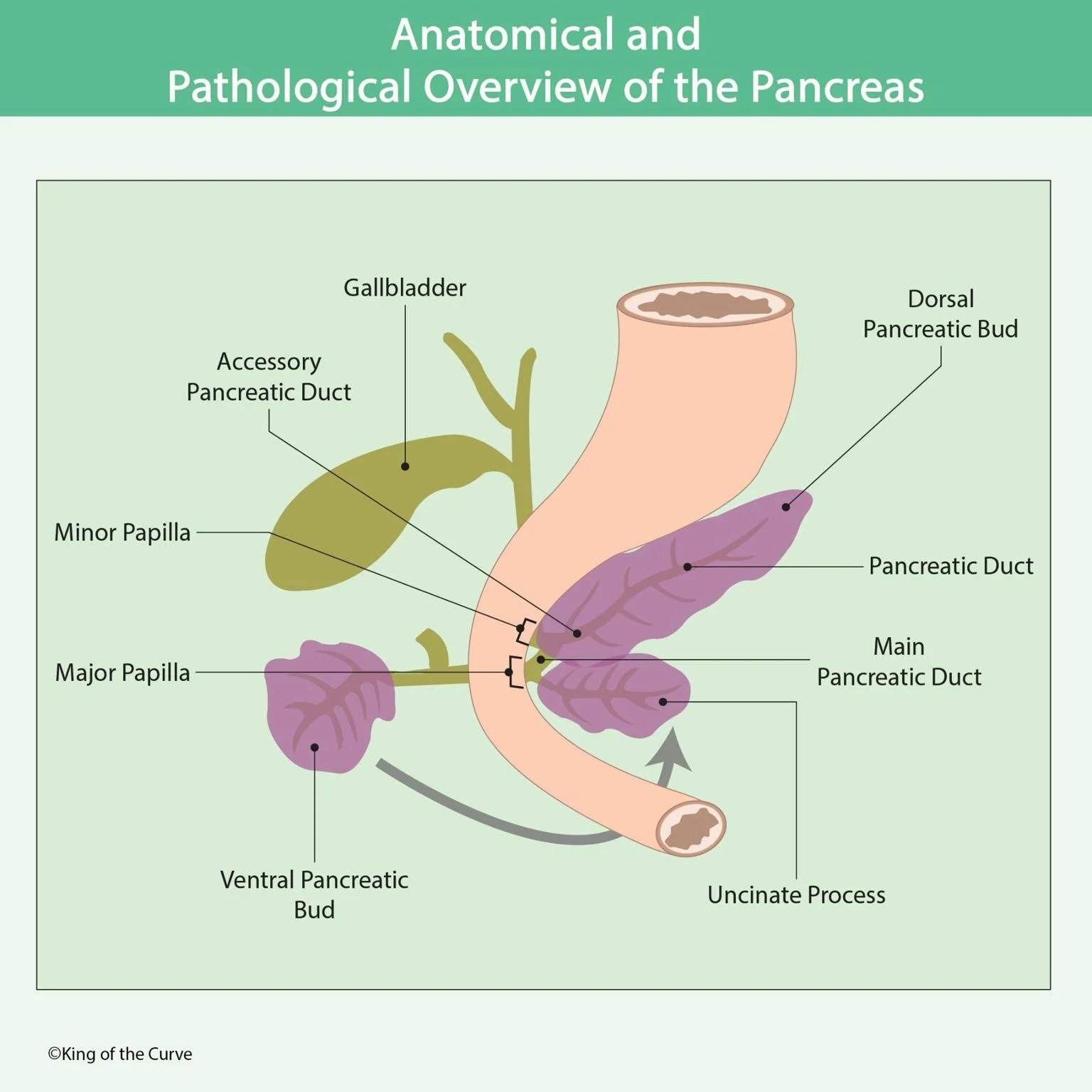🩺 Anatomical and Pathological Overview of the Pancreas
The pancreas is a uniquely dual-function organ, contributing to both endocrine regulation and digestive processes. This blog walks you through its anatomy, embryological development, ductal structures, and clinical significance with a detailed and intuitive visual guide.
🔬 1. Embryological Development of the Pancreas
The pancreas forms from two buds:
🔹 Dorsal Pancreatic Bud
➤ Develops into the upper head, body, and tail of the pancreas.🔸 Ventral Pancreatic Bud
➤ Forms the uncinate process and the inferior part of the head.
These buds rotate and fuse during development, giving rise to a single organ with a complex ductal network.
🧪 2. Pancreatic Ductal System
Two key ducts drain pancreatic enzymes:
🧵 Main Pancreatic Duct (Duct of Wirsung)
➤ Drains most of the pancreas and merges with the common bile duct.
➤ Opens at the major papilla in the duodenum.🧵 Accessory Pancreatic Duct (Duct of Santorini)
➤ Often drains the dorsal pancreas.
➤ Empties into the minor papilla.
This intricate ductal system ensures that digestive enzymes reach the duodenum efficiently.
🧍♂️ 3. Labeled Anatomical Structures (From the Image)
| Structure | Function |
|---|---|
| 🟢 Gallbladder | Stores bile for fat digestion. |
| 🟪 Dorsal Pancreatic Bud | Forms part of the head, body, tail. |
| 🟣 Ventral Pancreatic Bud | Forms the uncinate process & lower head. |
| 🔵 Main Pancreatic Duct | Major drainage route for pancreatic enzymes. |
| 🟠 Accessory Pancreatic Duct | Alternative drainage route. |
| ⚫ Minor & Major Papillae | Openings into the duodenum. |
⚠️ 4. Clinical Correlations and Pathologies
Understanding the anatomy is key to recognizing common pancreatic conditions:
🌀 Pancreas Divisum
➤ Incomplete fusion of the ducts → risk of chronic pancreatitis.🔄 Annular Pancreas
➤ Abnormal rotation → duodenal obstruction, especially in infants.🧬 Pancreatic Cancer
➤ Often arises in the head of the pancreas.
➤ Painless jaundice may be an early sign.🪨 Gallstone Pancreatitis
➤ Gallstones block pancreatic enzyme drainage → acute inflammation.
📌 Summary
The pancreas may be small, but its anatomy is highly sophisticated. From development to pathology, understanding its buds, ducts, and drainage patterns is essential in fields ranging from medicine to nutrition and surgery. This anatomical illustration from King of the Curve brings clarity to these complex topics for MCAT prep, med school, and clinical reference.
Frequently Asked Questions (FAQs)
-
Aim for 4-6 focused hours, ensuring you incorporate breaks to avoid burnout.
-
Practice mindfulness techniques, take practice exams under realistic conditions, and maintain a balanced lifestyle.
-
Set short-term goals, seek support from mentors, and reward yourself for small achievements.
-
Regular exercise improves focus, reduces stress, and enhances overall mental clarity.
-
KOTC offers personalized learning tools, gamification features, and adaptive question banks to help students stay on track without burnout.


